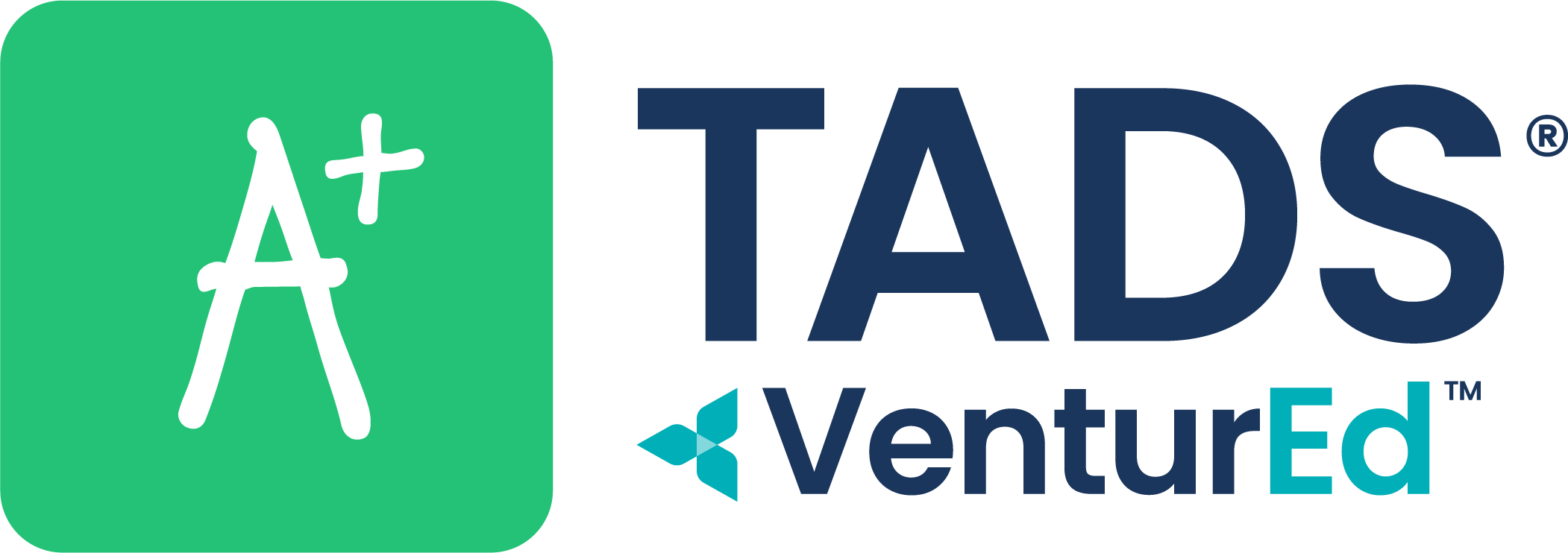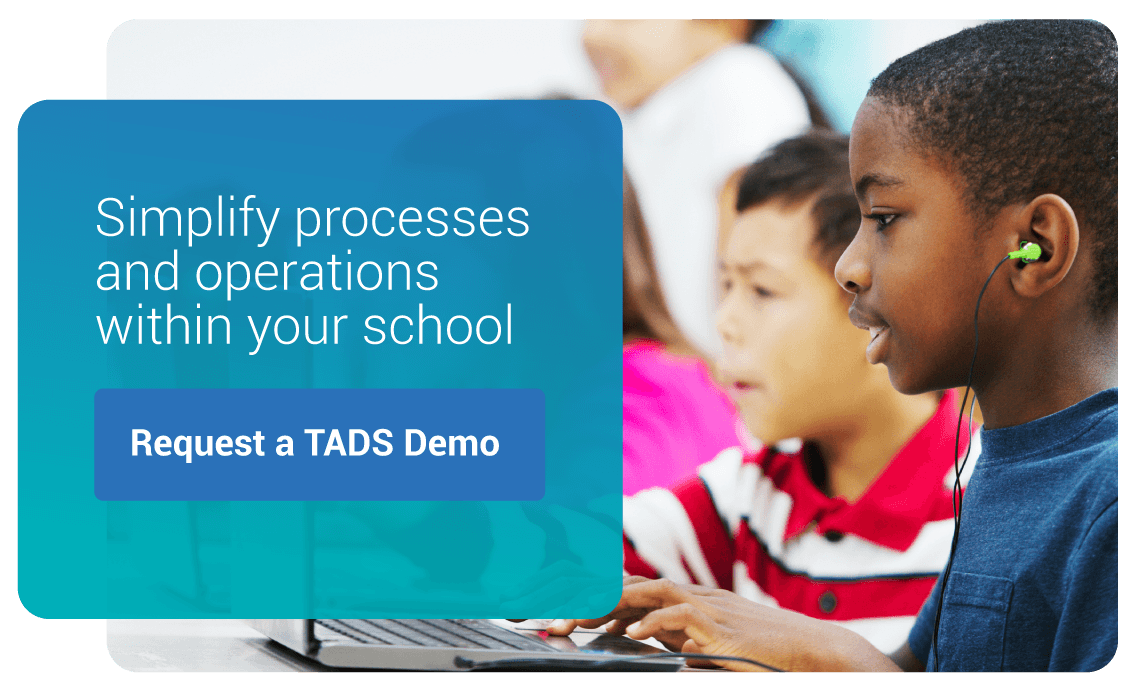
School management software significantly simplifies many essential processes within the private education system, including tuition, enrollment, and attendance records. Since these platforms hold access to large amounts of private student data, schools must ensure their software adequately protects this sensitive information. Schools use lots of sensitive data, making them vulnerable to data security breaches.
Understanding security breaches and the need for student privacy can help your school keep sensitive data secure. Learn how to protect student data privacy and prevent data breaches at your institution.
Data Security and Schools
Data security often refers to protecting digital data and private information from unauthorized access and use. In today’s digital world, increasing amounts of sensitive data across various industries and applications are stored digitally. While digital data is more convenient and accessible in many ways, it’s also more vulnerable to cyber-attacks and privacy breaches. This is why data security is more important than ever, especially in K-12 schools.
Modern schools at every level ask students and their families for various types of information to be eligible to attend. School databases store wide varieties of information ranging from attendance and grades to dietary restrictions and special needs. Student data like this helps educators best meet student needs.
Students, families, educators, and administrators can access this data from nearly any personal or school device, putting the data at higher risk of potential vulnerabilities. Administrators and teachers are responsible for implementing and using effective data security measures and ensuring students learn conscious privacy practices for their safety.
Student Data Privacy — Why It Matters
Data security is an important aspect of many areas of a school system, though students are often a significant source of sensitive data. In addition to their names, birthdates, and addresses, student data also includes their family’s contact and payment information. A lack of data security exposes students and their private information to potential threats.
Student data protection for schools is vital, as many K-12 students may lack the knowledge or awareness to determine when their privacy is threatened. This is what makes schools and students vulnerable targets of cyber attacks and why student data privacy matters.
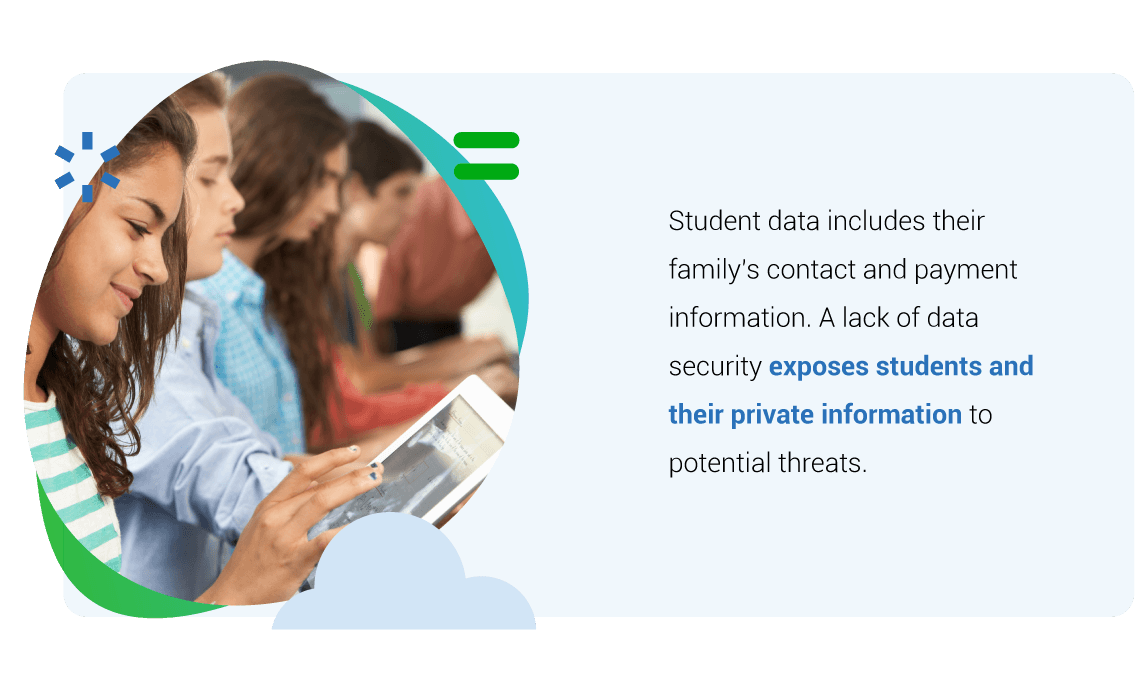
How Students and Faculty Can Help Protect Their Data
While schools hold much of the responsibility to maintain student privacy, properly educating your students and faculty on student data privacy can increase the effectiveness of privacy protection. Here are a few tips to share with students and faculty to help safeguard student privacy and data security:
- Avoid public Wi-Fi networks: Students and faculty should do their best to avoid connecting to public or unsecured Wi-Fi networks, especially when accessing school-related apps and sites. Hackers can more easily compromise sensitive information on shared networks.
- Update devices and apps: Phones, computers, and apps regularly release updates that often contain security improvements to ensure users have the most secure version of their technology. This helps prevent privacy breaches.
- Use social media safely: Bad actors use social media to lure sensitive data out of young users. Advise students to use social media carefully and to never post or share sensitive information.
- Avoid random links and suspicious emails: Students and faculty may receive deceptive emails containing links that may include bugs or ask for sensitive information. Interacting with these links can cause a privacy breach, so advise students to report them immediately.
- Use strong passwords: One of the easiest ways to protect student data is through the use of strong passwords. Encourage students to set their passwords to something unique containing various characters and no personal information.
What Does a Data Security or Student Privacy Breach Look Like?
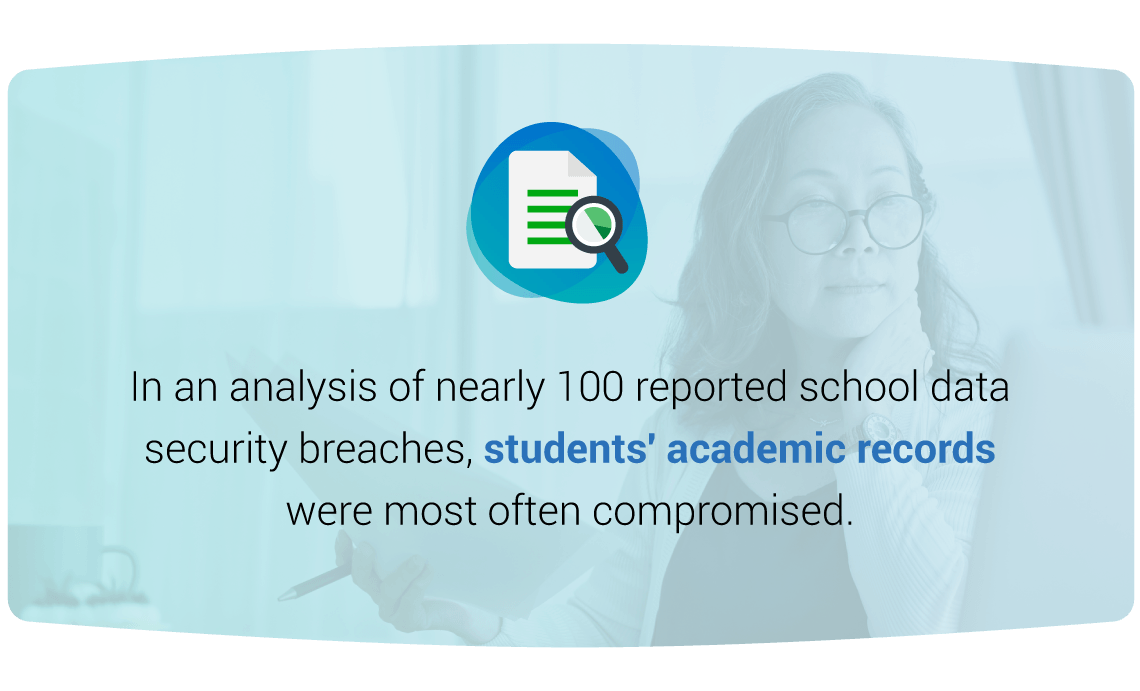
In an analysis of nearly 100 reported school data security breaches, students’ academic records were most often compromised. This could include information like standardized test scores, class grades, and Individualized Education Program records. The second most compromised data included personally identifiable information (PII) like students’ contact information and Social Security numbers. Depending on the intent behind the student privacy breach, exposed student data could cause emotional, physical, or financial harm to the students and their families.
Note that a data security breach could also involve sensitive data on the institutional level, like a school’s finances. While this may not have as direct of an impact on the students, the school’s reputation would likely be affected. Current and prospective families may reconsider the school’s ability to safeguard the students’ privacy.
Data and privacy breaches in schools can take numerous different forms, though they typically involve unauthorized access to data or student information. Most security breaches are intentional, though many occur accidentally, as well. So who’s responsible for intentional and accidental breaches, and what could they look like?
Intentional Data Security Breach
Intentional data security breaches involve an individual acting with malicious intent to access, alter, or steal student data. Students may be responsible for intentional security breaches, though cybercriminals can also be culprits here. It’s also common for the responsible individual or entity to be unknown.
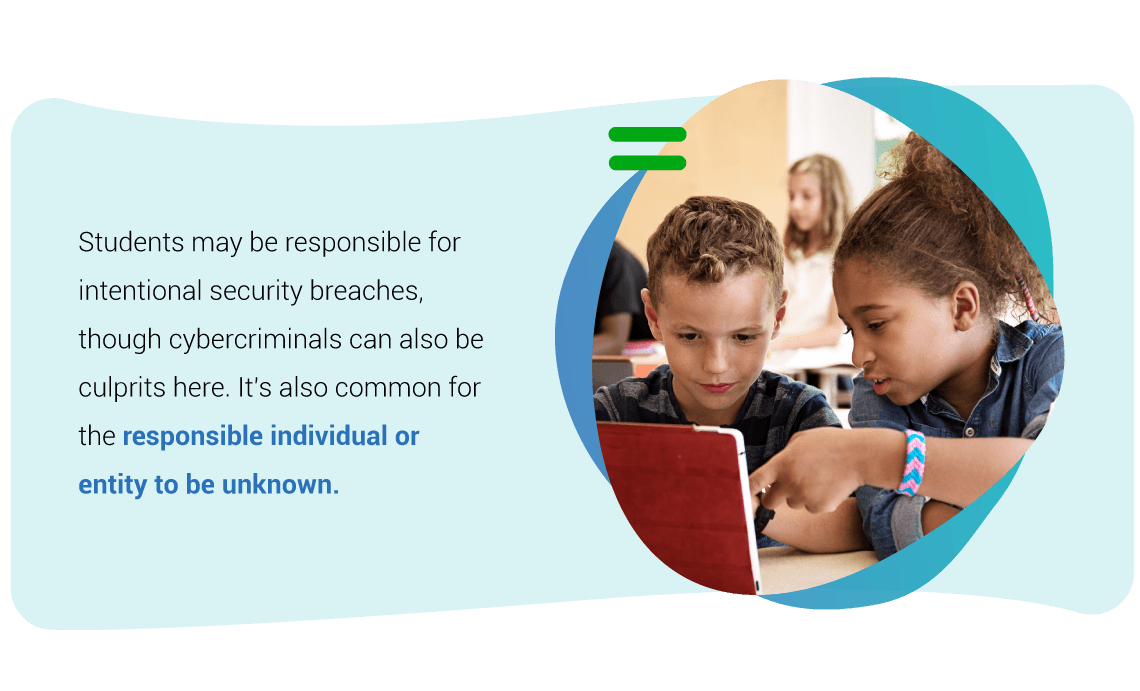
Students may access sensitive data for any number of reasons. For example, they may attempt to go into school records to change their own or someone else’s grades, for worse or better. Students may also want to access their peers’ records with the intent to use private information to bully or harass others.
Cybercriminals typically access sensitive data to steal PII. This puts students’ and families’ identities, accounts, and money at risk. Cybercriminals often use tactics like phishing emails to get students to reveal PII or other sensitive data. While less common, these types of breaches can affect students for a long time outside of school.
Accidental Security Breach
Accidental privacy breaches aren’t malicious. In most cases, school faculty and staff are responsible for accidental breaches. Accidental breaches typically involve an internal user seeing data they aren’t supposed to have access to. For example, an office secretary may assist administrators with office tasks involving private student records, and the secretary may accidentally view a file.
Since these users won’t record or use any of the data they viewed, it’s easy to overlook these situations. However, student privacy is still violated in these situations and should be treated as such. Any unnecessary exposure of personal data puts students at potential risk.
Potential Data Breach Causes
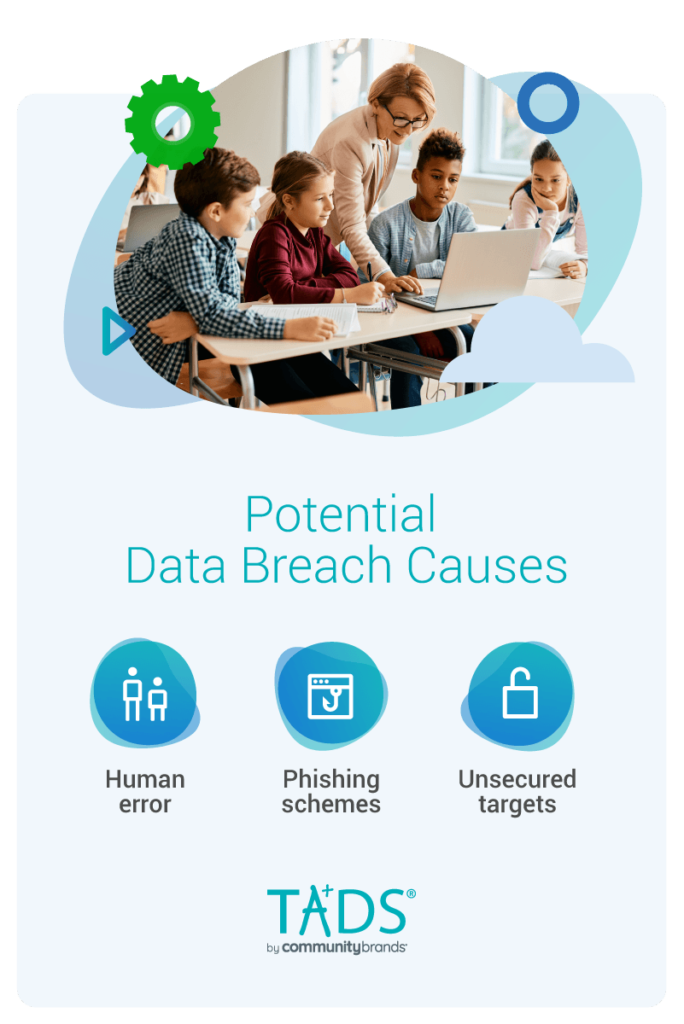
Many causes for data breaches exist, especially as hackers and cybercriminals develop more ways to access private data. Understanding the potential causes can help you and other administrators prevent future breaches more effectively. Here are a few common causes of data breaches in schools:
- Human error: Human error, carelessness, and lack of awareness are among the common causes of data breaches. Human error often causes accidental breaches, which are preventable in many cases. For example, sharing the wrong student file with another teacher is a simple mistake that can lead to a privacy breach.
- Phishing schemes: As mentioned above, cybercriminals commonly use phishing schemes to access private data. Most often, phishing includes emails and links containing ransomware and malware that can infect a system. This gives cybercriminals unauthorized access to a school’s data.
- Unsecured targets: Some security breaches are simply caused by a lack of budget and resources for adequate data security. For example, some student accounts may be unsecured, making for an easy target.
What Are the Measures You Can Take to Protect and Secure Your Data?
Implementing procedures and preventive measures can help protect and secure student privacy and data. Since there’s no single solution to data security breaches, it’s important for schools and administrators to take multiple actions toward securing privacy and regularly evaluating their efforts. Here are several protective measures to implement if you haven’t already.
Review Privacy Policies
Many schools use third-party apps, tools, and software to manage various aspects of the education system. Most external parties have privacy policies that outline how they collect and use data. Be sure to review this information before entering a contract and any time the policy updates to ensure the information is in-line with your school’s data security standards. Staying up-to-date on policy changes helps you understand exactly how students’ data is used.
Log Out
When students or faculty leave their devices unattended while still logged into their accounts, unwanted users can easily use the device and access the individual’s private information. A simple way to prevent this is to encourage students and faculty to always log out of their accounts and devices when they’re finished with a session. This helps ensure only authorized users can access accounts.
Limit Access to Sensitive Data
A simple rule of thumb is that the fewer people who have access to sensitive data and private student information, the less likely a breach will be. Limiting access to sensitive data helps prevent unauthorized people from viewing information they shouldn’t. It also makes it easier to track who accessed certain records and when, which can be helpful when identifying the person or entity responsible for a breach.
Provide Adequate Training and Education
Ongoing training and education for faculty, students, educators, and administrators stress the importance of data security and adequately prepare the entire school for potential scenarios. Ensure educators have the knowledge and resources to teach students about safe practices and the importance of privacy. Administrators should also keep schools updated on current student data privacy acts like the Children’s Internet Protection Act (CIPA).
Create a Security Breach Response Plan
The best way to prepare for a potential security breach is to have a response plan. Incident response plans allow you to anticipate potential breaches and prepare for how you will respond. A security breach response plan may include a variety of information including who to contact, who should do what, how to stabilize after the breach, and more. Ensure the appropriate people know their responsibilities and can take action when necessary.
Encrypt Private Data
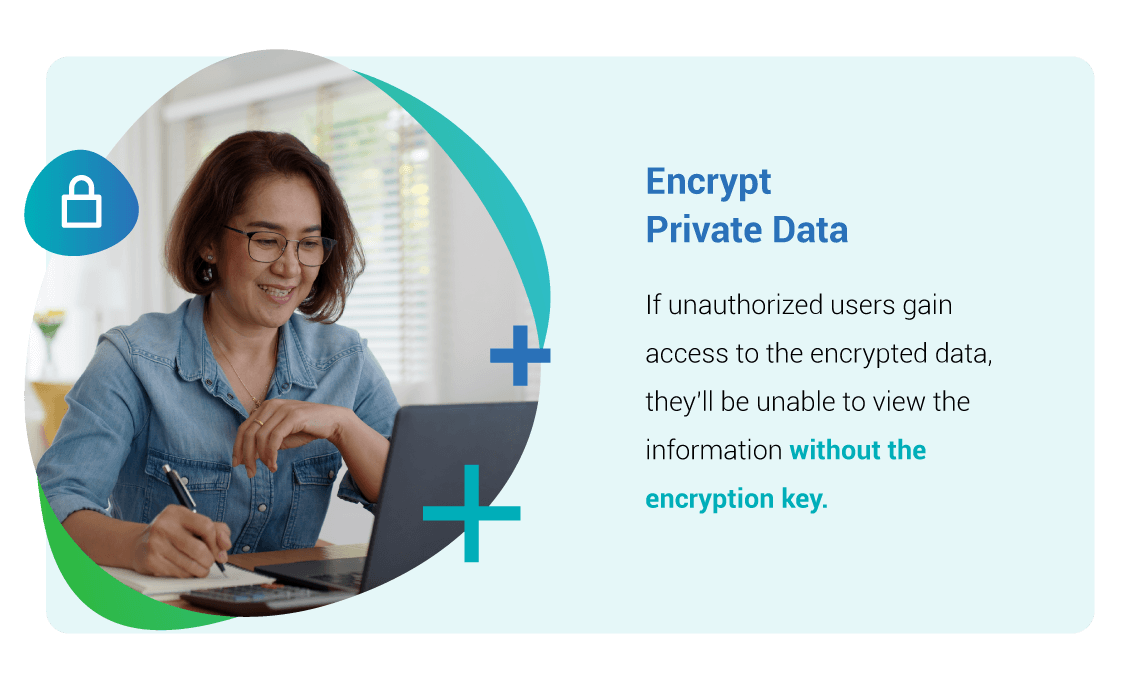
Encrypting sensitive data provides an extra layer of protection. Encryption tools cover sensitive data with code that must be decoded before viewing the information. If unauthorized users gain access to the encrypted data, they’ll be unable to view the information without the encryption key. For example, if there was a breach and encrypted student data was stolen, the thief would have to work a lot harder to view the information rather than it being readily available.
Delete Old Files
Some schools keep numerous records and files long after they’re needed, taking up physical and digital cloud space. While some records must be kept for certain amounts of time, your school likely has many old or unused files that can be deleted or disposed of. Deleting old files leaves less data to potentially be involved in a security breach. It’s also important to delete downloaded files that may sit in a folder, as they can contain malware.
Improve Login Requirements
Strengthening your school’s login requirements can help keep information secure. You may require students and staff to reset their passwords more often, require more complex passwords, and limit the use of prior passwords. Distribute information or host infosessions on password best practices. Explain that login details should include long passphrases that include at least 15 characters.
You may also consider multi-factor authentication for sensitive data. This requires users to provide multiple pieces of proof that they are who they say they are and that they’re authorized to access the given information. These requirements can help deter hackers from accessing private data.
Use School Management and Privacy Security Software
Many schools rely on management tools and software to tackle various aspects and processes within the school. For example, these tools allow educators to maintain attendance records and grades. If you use school management software, ensure there’s an element of data security and privacy included.
What to Do if Your School Has a Privacy Breach
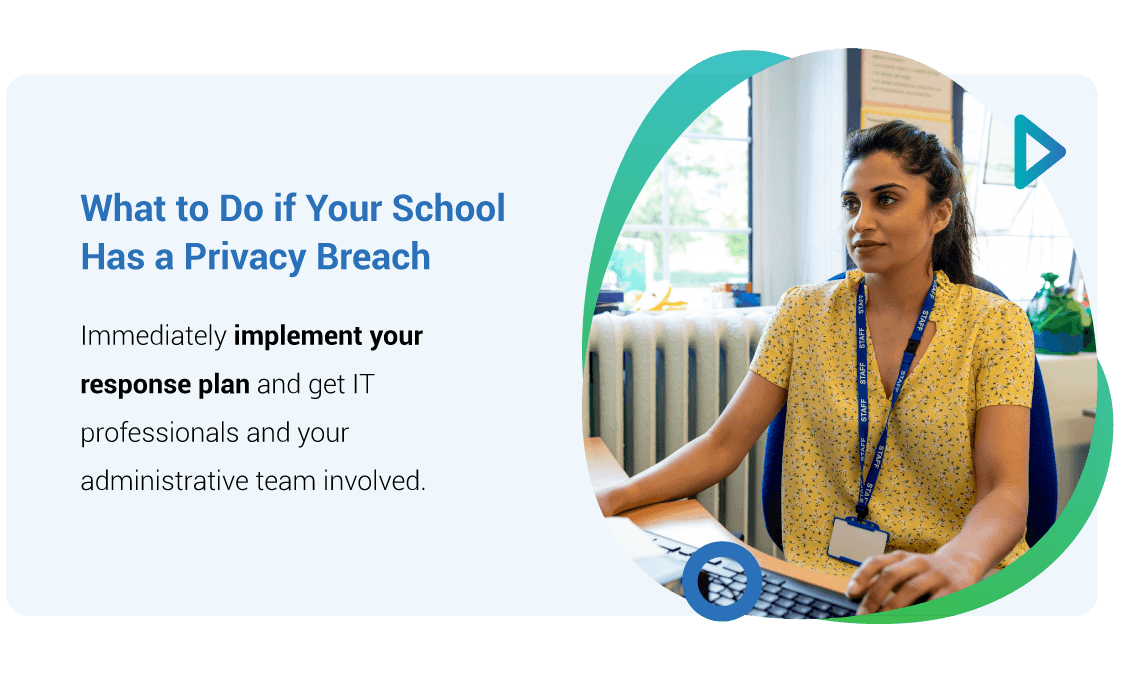
Despite all the preventive efforts, your school may still experience a privacy breach. What should you do if this happens? Here are some tips for what you should do if your students’ data has been breached.
Act Fast
When a breach is discovered, it’s important to act quickly and calmly. The sooner corrective actions can be made, the more effective they can be. Immediately implement your response plan and get IT professionals and your administrative team involved. If you use school management software and student privacy security measures, contact your provider for help as well, especially if the software was involved.
Take Devices and Accounts Offline
Identify which devices, accounts, and records have been affected and take them offline. If they’re being accessed by a hacker or cybercriminal, taking the information offline can help prevent the individual from having further access. This can help prevent the breach from worsening.
Reset Passwords
If accounts were compromised, advise students and faculty to change their passwords. For example, if email accounts have been breached, everyone should reset their passwords to something unique. Doing so can kick out unauthorized or unwanted users that are accessing the accounts.
Notify Those Affected
School data breaches should be reported, regardless of the severity. If any student or faculty data was compromised, it’s best to notify those individuals and families so they understand the situation and can take action on their end if need be. For example, if a parent’s payment method was compromised, they may need to contact their bank or credit card company.
How Does TADS School Management Software Provide Students’ Privacy and Data Security?
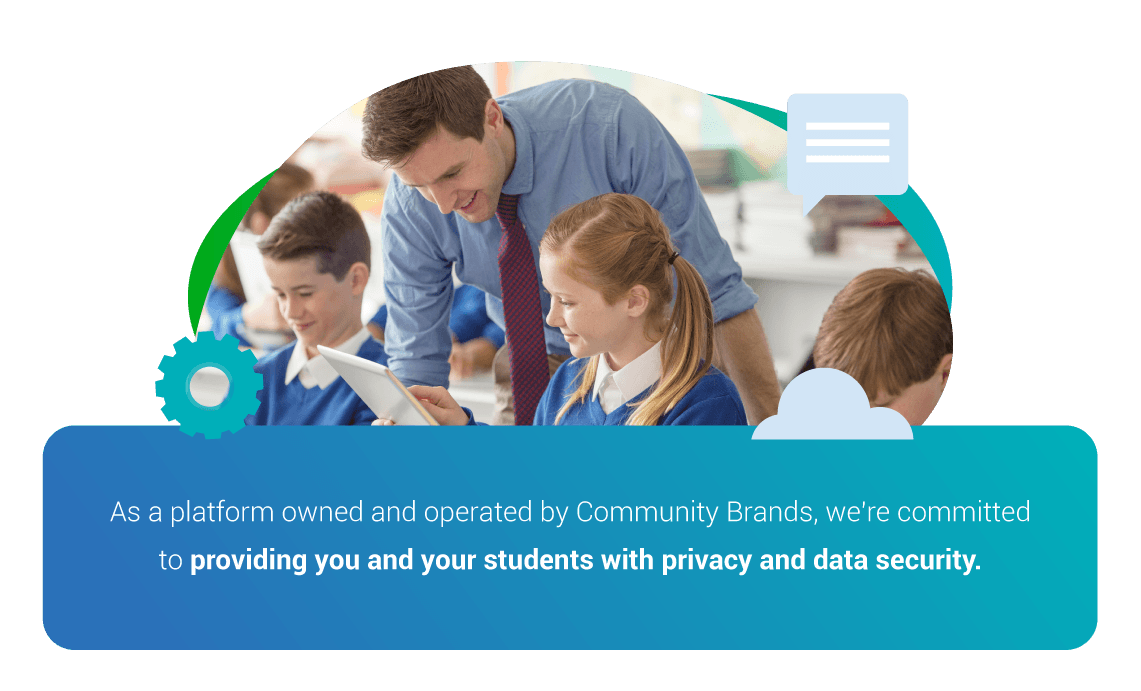
TADS is part of a select software suite that offers school management tools like tuition and billing, student information systems, admission and enrollment, and more. Our software is designed for independent and private schools’ unique needs.
As a platform owned and operated by VenturEd Solutions, we’re committed to providing you and your students with privacy and data security. While our privacy policy goes into greater detail, here are a few key points to help your school understand how TADS protects your data.
What Information Is Collected?
Depending on what TADS services your school uses and what your students’ and families’ preferences are, we may collect information like:
- Contact information, including full names, addresses, emails, phone numbers, and more
- Payment, tuition, and financial aid data
- Application and employment data
- Education and job background
- Login information for VenturEd Solutions services and websites
- Communication preferences
How We Collect Data
It’s important to note that we collect and process student data under your direction, which means your school owns and controls the information and is responsible for compliance related to data usage. In other words, your school should have its own processes and data security measures in place to properly protect students’ privacy. Our privacy policy only applies to how we collect and process data for your school.
We collect and access data that you voluntarily give us as our customer. We collect data through direct contact with you and your students’ families. We use this information to provide effective services to our customers or to respond to messages from you.
How Your Data Is Protected
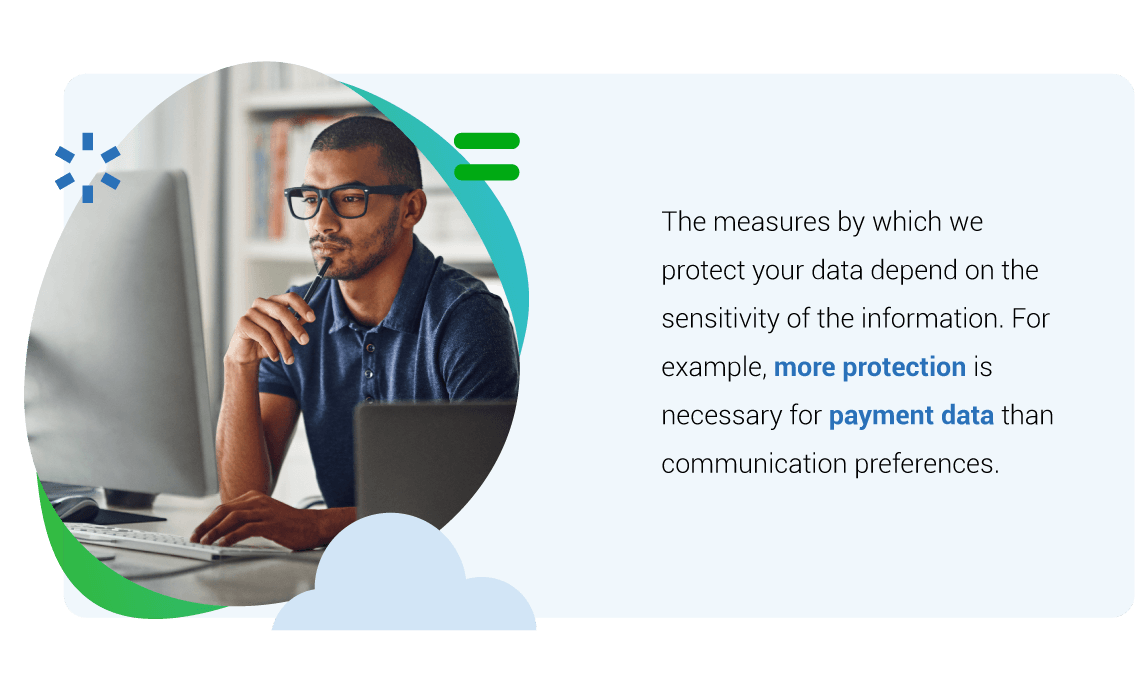
We don’t sell or rent student data, and, unless given permission, we don’t share collected data unless under certain exceptions. Appropriate security measures maintain your data while you use our services, and we only keep it for a reasonable time after services end.
We understand much of the information collected for the use of our services is sensitive data and we treat it as such. We protect your students’ data offline and online. The measures by which we protect your data depend on the sensitivity of the information. For example, more protection is necessary for payment data than communication preferences.
We also allow a student’s guardian to review and correct their child’s information and discontinue the use and collection of their child’s information at any time. This gives families more control over their students’ privacy and sensitive information.
Request a TADS Demo
Student privacy and data security start with the software, platforms, and tools you use in your school. With a comprehensive school management and tuition aid data service like TADS, you can simplify numerous processes and operations within your school. With enhanced functionality and connectivity, your school can free up time and resources to dedicate to data security and student privacy. TADS offers several features and tools that allow you to securely and confidently collect and use sensitive data to effectively run your private school.
Contact our support team to learn more about our privacy policy and request a demo to find out how TADS could work in your school.
